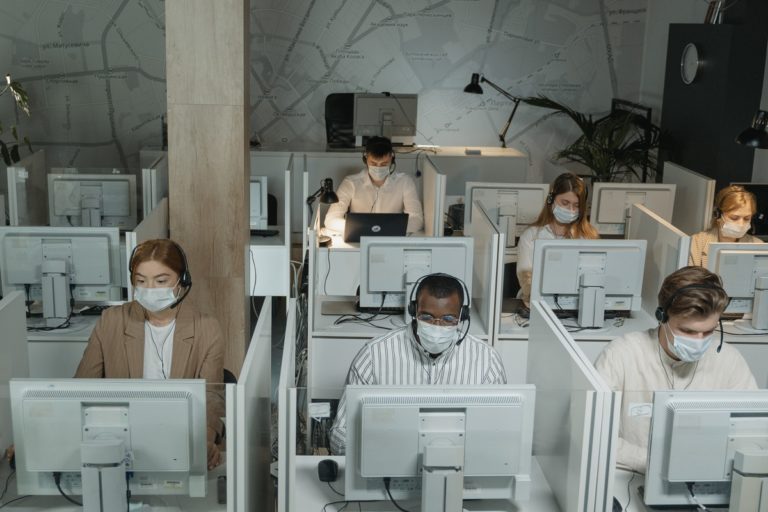When COVID-19 was declared by the World Health Organization (WHO) as a global pandemic in early March 2020, companies worldwide — may they big or small — were hurriedly forced to adapt to a remote work scheme to continue operation.
A few weeks after the initial declaration, the number of U.S. employees working from home 5 days or more per week rose to 44 percent from the 17 percent pre-pandemic record.
The coronavirus outbreak only accelerated the remote working trend globally as working in an office environment is close to impossible due to quarantine and lockdown protocols.
Nonetheless, several businesses started reopening again as of late last year. With vaccination rollouts, it is expected that the number of employees returning to their offices would increase.
However, returning things to normal is easier said than done. With the threat of COVID-19 still looming, companies are obliged to ensure their employees’ safety and health or devise a plan in case offices would be ordered closed again.
Tips Companies Should Consider When Returning to the Workplace
Tip 1: Clear Plans for Returning to Work
You need a systematic and consistent plan if your company plans to get people back into the office.
Though each organization differs in terms of circumstances, there are three common grounds which every organization share:
- Your employees’ perception is crucial as it defines what they believe is happening.
- Being transparent is crucial to building trust and prevent misinformation.
- Practical sound judgment should always be followed.
Creating a group of internal stakeholders would better prepare your organization for your eventual return to the workplace. These stakeholders should come from different company departments to address every concern unique to each team.
With the comprehensive guideline created by this dedicated group, you can ensure that your organization is safe and prepared if there is a COVID-19 case in the office. With safeguards in place, your company is better prepared to respond to any changes in its circumstances.
The safety and health guidelines should at least contain the following measures:
- Screening procedures for employees, contractors, and visitors.
- Mandated wearing of face masks, face shields, or PPE.
- Regular cleaning of air filters.
- Up-to-date sick leave policies.
- Advice to maintain the safest possible practice to be observed at home and in the office.
Tip 2: Clear Re-exit Plans
A good re-exit plan is also necessary should caseloads increase again. Though none of us wish for COVID-19 cases to increase, we can never be certain that we can absolutely prevent it.
To reduce the chances of any setbacks, rather than immediately ordering all employees to report back to the office, it is much better if your company implements a systematic phase-by-phase approach.
For example, only 10 to 15 percent of your workforce would be sent back to the office during the first quarter of your reopening plan.
That way, it would be much easier to halt or reverse the work arrangement if any changes come up again.
You may also solicit real-time feedback for those employees who have returned to the office. Their valuable feedback could help your company make more informed decisions should you broaden your plans of returning the workforce to the office.
Also, without a proper re-exit plan, your employees carry a heavier burden. Having to switch plans and schedule is tedious enough.
Tip 3: Open to Flexible Work Environment
Companies should also consider the act that not everyone has the same level of comfort when it comes to health, safety, and risk.
Though your company might be making moves already to return workers to the office, you have to consider those staff members who are not yet ready or unwilling to return to the office yet. Offering flexibility to continue working from home should not be removed from the table.
This move for a more flexible work arrangement is not just to accommodate your employees’ safety and health concerns. Studies have shown that a remote work option has a positive impact on employees and overall office productivity.
77 percent of employees working from home reported higher levels of productivity. Furthermore, 53 percent of work-from-home staff are less likely to take time off than those who work in the office full time.
Perhaps the biggest takeaway from all these work-from-home statistics is the fact that 83 percent of workers are reportedly more satisfied with their job.
Apart from these statistical data, it has been shown that 37 percent of jobs can be done remotely with ease. And as the pandemic pushed businesses across various industries to figure out innovative ways to make working from home more possible, the number of jobs that can be done remotely is likely to increase.

Final Word: Show Gratitude & Support to Staff
The challenges brought about by the pandemic are tedious on both ends. However, workers take the major blow in dealing with this pandemic.
Apart from having clear return-to-work and re-exit plans and offering flexible work arrangements, companies should never forget to show gratitude and support for their staff. It does not necessarily have to be a grand gesture or a huge pay raise — although it is very welcomed.
Checking on your staff now and then, talking to them about their feelings, and taking up measures to promote their mental health are some ways your organization can show this gratitude and support.
Also, if a return-to-work order in your company is already in motion, ensuring your staff’s comfort and safety should be of priority.
Apart from observing COVID-19 protocols, doing small repairs and maintenance, like having electricians check wiring and plumbers check pipes, adds to your employees’ perception that the company genuinely cares for them.




